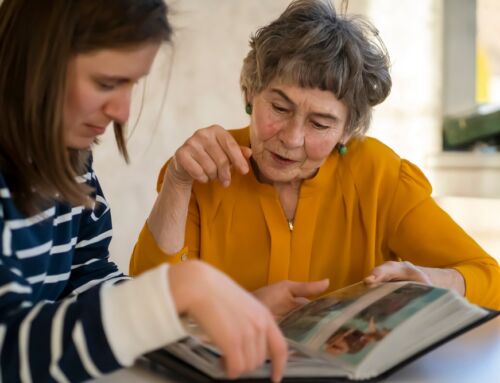It’s graduation season, and high schools and universities across the country are celebrating the accomplishments of their students. But for many people, their love of learning doesn’t end in young adulthood.
I read an article this week about a 93-year-old retired optometrist named Lewis Taub, who has just audited his 50th class at Skidmore College, a liberal arts college in Saratoga Springs, New York. Taub has been auditing a course every spring and fall semester for 25 years—since 1994—giving him the equivalent of 150 college credits. When asked what kept him returning each semester, Taub explained, “I’m dealing with young people, and it makes me feel young.”
There are numerous reasons why lifelong learning programs are so popular among seniors. Continuing to learn keeps the mind active, nurtures curiosity and creativity, and creates opportunities for intergenerational friendships to form. (I’ve written before about the mutual benefits of intergenerational programs.)
Many retirement communities strive to cultivate their residents’ desire to learn, offering on-site classes and lectures on a variety of topics. But Arizona State University is leading the way when it comes to melding senior living, intergenerational programs, and lifelong learning.
>> Related: Lifelong Learning: Good for Seniors’ Minds & Bodies
Senior living meets love of learning
Last year, the university broke ground on Mirabella at ASU, a 20-story continuing care retirement community (CCRC, or life plan community) on their Tempe campus that will include 252 high-end independent-living apartments, many with spectacular views of the mountains. The complex will feature an indoor pool, theater, art gallery, spa, dog park, and four restaurants—all within walking distance to ASU’s campus.
As part of their continuum of care, Mirabella at ASU also will boast 52 healthcare units comprised of assisted living apartments, skilled nursing suites, and a secured memory care section. The community is scheduled for completion in 2020.
This innovative project will connect the research university’s student community to Mirabella, fostering residents’ love for lifelong learning. Mirabella residents will be able to audit classes on campus, utilize the university’s library, and participate in the school’s cultural and sports events, as well as enjoy downtown Tempe’s many restaurants, cultural, and recreational opportunities—many just a short walk away.
>> Related: 4 Ways CCRCs Help Seniors Stay Healthy
Mutual benefits of intergenerational programs
As with other intergenerational programs, Mirabella brings benefits for younger ASU students as well. In addition to creating mutually beneficial friendships and mentorships between students and the seniors, Mirabella will enhance the university’s academic programs. The senior living community will create opportunities to extend the school’s coursework and research in subjects like art therapy for seniors, Alzheimer’s treatments, and nursing.
>> Related: Everyone Wins: Why Society Must Tap into Seniors’ Experience & Wisdom
Campus life…only better
Innovative CCRCs like Mirabella at ASU are increasing in number and popularity as the Baby Boomer generation looks for ways to remain active and young-at-heart. Such communities offer the best of both worlds: the educational, cultural, and entertainment opportunities that come with living on a college campus, plus the amenities and continuum of care services that come with a CCRC.
In the press release announcing the groundbreaking ceremony, ASU’s president, Michael Crow, aptly described Mirabella as “the world’s coolest dorm.” He continued: “There’s no reason everyone can’t be a college student and engaged in what this community has to offer for the entirety of their lives.”






